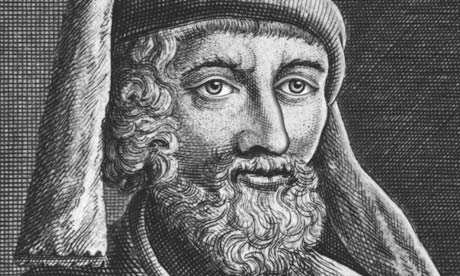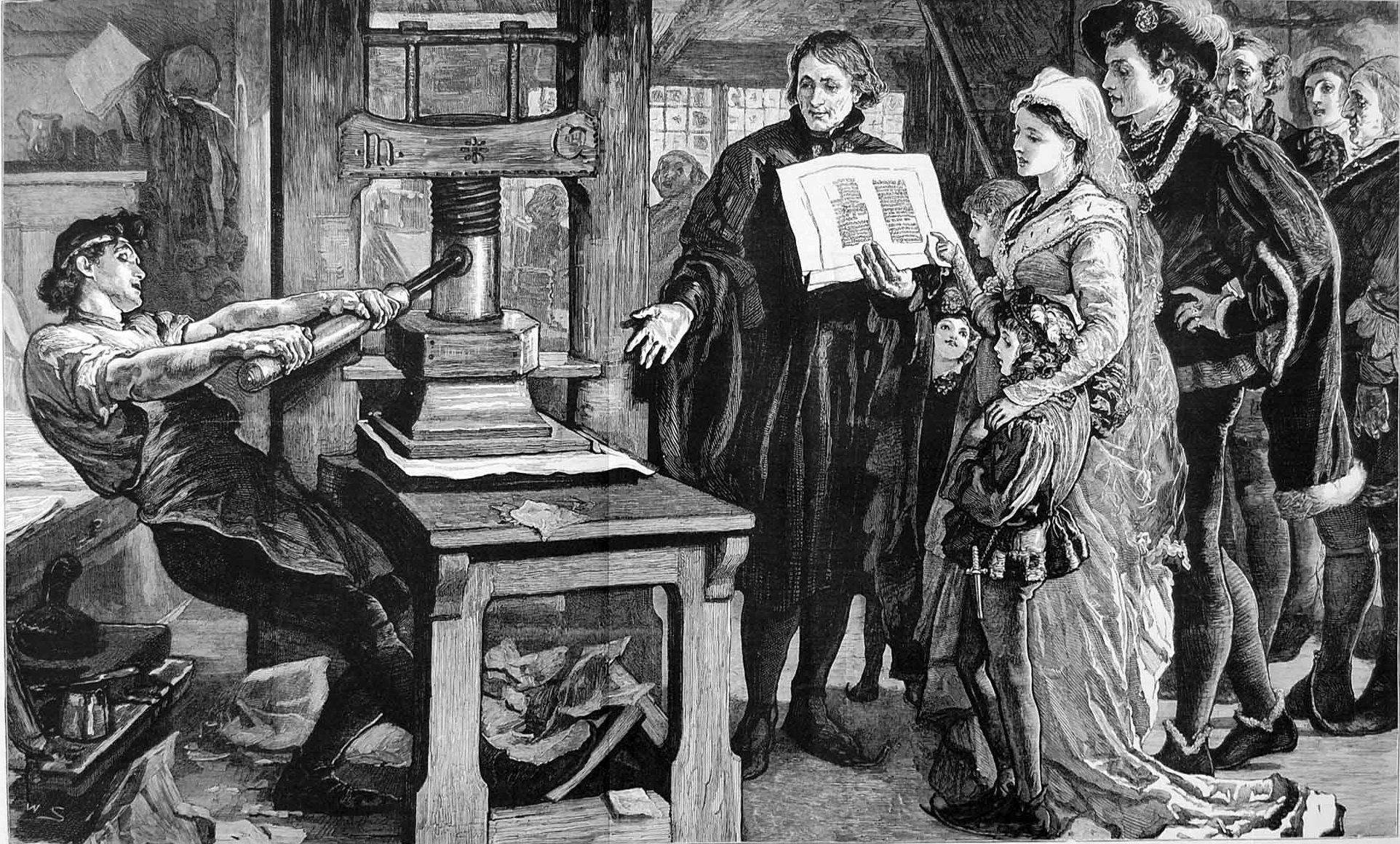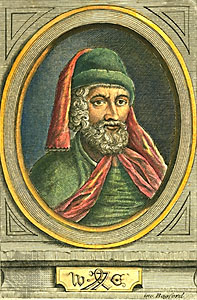
Every single person reading this blog would (I hope) know the name “Gutenberg.” Right? Now here’s another major name in the printing world, perhaps not known by everyone… William Caxton. Maybe you know him, maybe you don’t. We aren’t here to judge your knowledge of the printing business. We’re just here to educate you! So sit back, relax, and learn something new.
 William Caxton was born sometime during the years 1415-1424, which scholars have appropriated since his apprenticeship fees were paid in 1438. He grew up and was educated in the district of Kent, before leaving for London to be apprentice to Robert Large, a wealthy London dealer or luxury goods. Caxton made trips to Bruge after the death of Large in 1441, and eventually settled there in 1453. He was successful in his business as a merchant, and after becoming governor of the Company of Merchant Adventurers of London he became a member of the household of Margaret, Duchess of Burgundy and sister to two Kings of England! This was a fortuitous time in Caxton’s life, as due to his international travels for the Duchess’ household he observed the brand new printing press business in Germany (as the Gutenberg press had began in 1440) and immediately set up his own printing press in Bruge and within a few years produced the first book known to be printed in English, published in 1473 Recuyell of the Historyes of Troye (“A Collection of the Histories of Troy” ) – a book of French courtly love translated by Caxton himself. (Fun antiquarian book world fact: only 18 copies of this printing still exist [kind of shocking there are even 18], and one sold by the Duke of Northumberland in 2014 and fetched over 1 million GBP.)
William Caxton was born sometime during the years 1415-1424, which scholars have appropriated since his apprenticeship fees were paid in 1438. He grew up and was educated in the district of Kent, before leaving for London to be apprentice to Robert Large, a wealthy London dealer or luxury goods. Caxton made trips to Bruge after the death of Large in 1441, and eventually settled there in 1453. He was successful in his business as a merchant, and after becoming governor of the Company of Merchant Adventurers of London he became a member of the household of Margaret, Duchess of Burgundy and sister to two Kings of England! This was a fortuitous time in Caxton’s life, as due to his international travels for the Duchess’ household he observed the brand new printing press business in Germany (as the Gutenberg press had began in 1440) and immediately set up his own printing press in Bruge and within a few years produced the first book known to be printed in English, published in 1473 Recuyell of the Historyes of Troye (“A Collection of the Histories of Troy” ) – a book of French courtly love translated by Caxton himself. (Fun antiquarian book world fact: only 18 copies of this printing still exist [kind of shocking there are even 18], and one sold by the Duke of Northumberland in 2014 and fetched over 1 million GBP.)
 After his success with the printing in Bruge, Caxton brought his art back to England in 1476 and set up the country’s first ever press in a section of the Westminster Abbey Church. The first book printed in England itself was an edition of Chaucer’s The Canterbury Tales. Other early titles printed by Caxton included Dictes or Sayengis of the Philosophres translated by the king’s brother in law Earl Rivers, and Caxton’s own translations of the Golden Legend in 1483 and The Book of the Knight in the Tower. Caxton also printed the first ever English translation of Ovid’s Metamorphoses, as well as Le Morte d’Arthur.
After his success with the printing in Bruge, Caxton brought his art back to England in 1476 and set up the country’s first ever press in a section of the Westminster Abbey Church. The first book printed in England itself was an edition of Chaucer’s The Canterbury Tales. Other early titles printed by Caxton included Dictes or Sayengis of the Philosophres translated by the king’s brother in law Earl Rivers, and Caxton’s own translations of the Golden Legend in 1483 and The Book of the Knight in the Tower. Caxton also printed the first ever English translation of Ovid’s Metamorphoses, as well as Le Morte d’Arthur.
[As you can probably already tell, if you didn’t know the name Caxton that is:
a) shocking
b) embarrassing
c) all of the above
but in all reality, he is not as spoken of as Johannes Gutenberg and his press. So yes, Gutenberg is given big props for developing the early European movable type system, but why isn’t Caxton’s name also taught in schools?!]
 Caxton’s death is recognized as taking place in 1491 or 1492, as that is when his work stopped being produced. He was succeeded by his Dutch employee Wynkyn de Worde, who is recognized for moving the printing of books in English away from an excitement enjoyed by the aristocrazy and nobility and toward the idea of printing for the masses. De Worde is often known as “England’s first typographer” and printed over 400 books in over 800 editions. Caxton, god bless him, printed 108 books of 87 different titles. However, Caxton did much of his translating himself, working on an honest desire to provide the best translation possible to his customers. Despite the fact that de Worde is known for standardizing the English language (as there were, at that time, so many different dialects and different spellings that it was often difficult to keep track), Caxton is absolutely also honored for beginning this process and though printing books of no remarkable or significant beauty, then at least for beginning the process of printing books in English at all!
Caxton’s death is recognized as taking place in 1491 or 1492, as that is when his work stopped being produced. He was succeeded by his Dutch employee Wynkyn de Worde, who is recognized for moving the printing of books in English away from an excitement enjoyed by the aristocrazy and nobility and toward the idea of printing for the masses. De Worde is often known as “England’s first typographer” and printed over 400 books in over 800 editions. Caxton, god bless him, printed 108 books of 87 different titles. However, Caxton did much of his translating himself, working on an honest desire to provide the best translation possible to his customers. Despite the fact that de Worde is known for standardizing the English language (as there were, at that time, so many different dialects and different spellings that it was often difficult to keep track), Caxton is absolutely also honored for beginning this process and though printing books of no remarkable or significant beauty, then at least for beginning the process of printing books in English at all!

